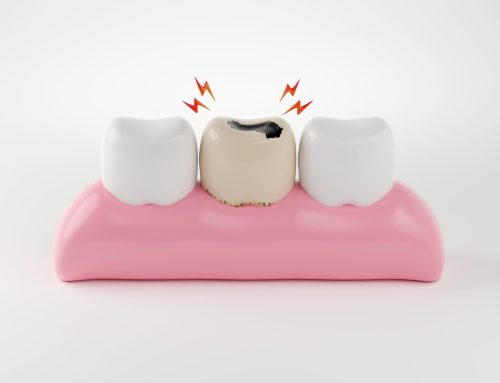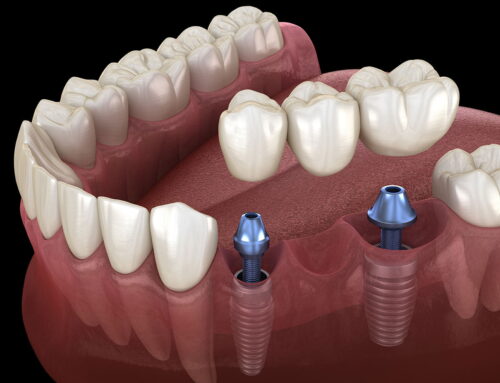Our teeth are important to our overall health. When you bite down on your favourite snack and feel a shooting pain through your tooth, that doesn’t just mean you should start chewing on the other side. You may require a root canal – which isn’t as bad as it sounds. It’s a simple procedure that will save your tooth.
Read on to learn more about how a root canal is treated and why it might be necessary to save your tooth.
Why is a Root Canal Treatment Necessary?
A root canal treatment, which is sometimes referred to as endodontic treatment, is a dental procedure that includes the removal of the pulp tissue from the interior of a tooth that is either infected or damaged. The pulp is the centre layer of your tooth, and because it is home to your nerves, it requires extra care. The procedure can be carried out by either a general dentist or an endodontist, who is a specialist in the treatment of the soft tissue that is located inside the teeth.
A root canal treatment is recommended if the pulp tissue becomes damaged or infected. This can happen for a number of reasons, such as deep decay, trauma, a cracked tooth, or repeated dental procedures on the tooth. If the damaged or infected pulp tissue is not removed, it can lead to an abscess or infection, which can cause pain and swelling in the surrounding tissues.
What are the Symptoms of a Damaged or Infected Pulp?
The symptoms of a damaged or infected pulp can include the following:
- Pain when biting or chewing
- Sensitivity to hot or cold beverages and food
- Swelling and tenderness in the surrounding gums
- Discoloration of the tooth
- Pus coming out from the gums
- Bad breath
If you are experiencing any of these symptoms, you should consult a dentist immediately. Ignoring the problem can lead to further complications and may require more extensive treatment or tooth loss.
What is the Process of a Root Canal Treatment?
While you may hear the phrase “I’d rather get a root canal,” the process is quite simple for the patient, almost like getting a regular filling. A root canal treatment typically involves the following steps:
Step 1: Diagnosis and X-rays: The dentist will do an oral exam and take X-rays to determine the extent of the damage.
Step 2: Anesthesia: The dentist will numb the affected area with local anesthesia. This ensures that the patient feels no pain during the procedure.
Step 3: Accessing the pulp: The dentist will make an opening in the tooth to access the infected or damaged pulp tissue.
Step 4: Cleaning and shaping the root canal: The dentist will use special instruments to remove the infected or damaged pulp tissue from the root canal. When the pulp is removed, the root canal is then cleaned to avoid future infection and prepared for a filling.
Step 5: Filling the root canal: The dentist will fill the root canal with a unique material called gutta-percha. This seals the root canal and prevents further infection.
Step 6: Restoring the tooth: After the root canal treatment, the tooth will be weak and may require a crown or filling to strengthen it.
Step 7: Follow-up: The dentist will schedule a follow-up appointment to monitor the healing of the tooth. In some cases, antibiotics may be prescribed to prevent infection.
Despite the stigma about root canal treatments, they are not painful. The procedure is performed under local anesthesia, which numbs the affected area and prevents pain. After your appointment, discomfort or sensitivity may occur, but this can be managed with over-the-counter pain medication.
The Benefits of a Root Canal Treatment
Avoiding a root canal treatment, especially if you’re in pain, can only make things worse. There are several benefits to this procedure, including the following:
- Relieving pain and discomfort
- Saving the affected tooth from extraction
- Restoring the function and appearance of the tooth
- Preventing further infection and damage
- Improving overall oral health
How Can I Prevent the Need for a Root Canal Treatment?
Preventing the need for a root canal treatment involves maintaining good oral hygiene and regular dental checkups. Some tips to avoid the need for a root canal treatment include:
- Brushing your teeth twice a day or after every meal with fluoride toothpaste
- Flossing every day to remove left behind food particles and plaque from between teeth
- Limiting sugary and acidic foods and drinks
- Avoiding smoking and tobacco use
- Visiting the dentist every six months for checkups and cleanings
- Wearing a sports guard especially the customized one for contact athletic activities
If you’ve been avoiding the dentist due to pain and fear of a root canal, you can put your worry to rest. This painless procedure can relieve pain, prevent further complications, and ultimately save your tooth. If you are experiencing any symptoms of a damaged or infected tooth, contact us to make an appointment and support your oral health.
Have you experienced any pain or discomfort while chewing? What were your next steps? Share your experience with our readers in the comments below.






Leave A Comment